[EDITOR’S NOTE: This post continues my comprehensive history about the expansion of Verizon. This most recent installment takes the story through the end of 2000. Part One, which concerns itself with April to August 2000, can be found here. Part Two, which concerns itself with August 2000, can be found here. Part Three, which concerns itself with September and October 2000, can be found here.]
 Like any mushrooming company hoping to discharge its spores upon every square mile in a new field, Verizon had its lobbyists. In 1999 and 2000, Verizon, BellSouth, and SBC gave more than $7.1 million to political parties and federal campaigns, ensuring that they were among the top 25 donors. The funds were well-timed, arriving in Washington just as Congress was in the process of loosening restrictions.
Like any mushrooming company hoping to discharge its spores upon every square mile in a new field, Verizon had its lobbyists. In 1999 and 2000, Verizon, BellSouth, and SBC gave more than $7.1 million to political parties and federal campaigns, ensuring that they were among the top 25 donors. The funds were well-timed, arriving in Washington just as Congress was in the process of loosening restrictions.
AT&T perhaps had the most to lose from attempting to influence the reordering of the telecom guard. Faced with the October surprise of splitting itself up into four parts, AT&T alone had contributed $4.3 million during the 2000 election cycle. It was facing complaints from its investors.
Meanwhile, the telecommunications companies were beginning to enter more long-distance markets. Verizon, of course, knew when to steer clear of federal legislation or, more accurately, precisely when to time its actions in relation to governmental and competitive developments. Near the close of 2000, it withdrew its application for Massachusetts long-distance services. (Verizon was then under scrutiny from other telecom providers. In April 2001, it would receive federal approval in Massachusetts, where the competition would heat up.)
 By the end of October, Verizon may have been doing okay in the stock market. But its third-quarter profit was flat. The money that Verizon had spent to dominate DSL and long-distance markets with discount pricing had remained the same from the year earlier. Verizon profits in Q3 2000 were $1.99 billion, whereas Bell Atlantic profits had been $2 billion a year earlier. The m.o. involved spending and undercutting. But this seemed enough to assuage Wall Street.
By the end of October, Verizon may have been doing okay in the stock market. But its third-quarter profit was flat. The money that Verizon had spent to dominate DSL and long-distance markets with discount pricing had remained the same from the year earlier. Verizon profits in Q3 2000 were $1.99 billion, whereas Bell Atlantic profits had been $2 billion a year earlier. The m.o. involved spending and undercutting. But this seemed enough to assuage Wall Street.
Profits needed to come from somewhere. But there was also the matter of eager consumers trying to find the cheapest possible price on DSL. Local telephone service was the logical place to start jacking up prices. On November 1, 2000, while Verizon New Jersey proposed to double basic telephone rates from $8.19 a month to anywhere from $15-17 a month, regulators called a hearing. Elderly customers complained that they would be saddled with undesired expenses and undesired services. Verizon’s argument was that it cost them much more than $8.19 a month to provide basic telephone service to its customers, but Verizon spokeswoman Soraya Rodriguez did confess that there wasn’t much in the way of competition for local service
These sentiments were in sharp contrast to the Bell Atlantic days. In 1992, Bell Atlantic had brokered a deal with Trenton. They would rewire Jersey lines if the state loosened Bell Atlantic from a regulative loophole that forced it to lower rates if it made an unreasonable profit. In 1997, the New Jersey Board of Public Utilities had stood its ground. The result was that Trenton had managed to get its line rewired and New Jersey customers had experienced some of the cheapest local telephone service in the country. But Anthony Wright, the program director for New Jersey Citizen Action, would organize opposition to the plan and score a victory later in the year. This was, however, not the end of Verizon’s efforts to squeeze profits out of local telephone service, as subequent 2004 efforts in the Northwest would eventually reveal. (Indeed, in early 2008, Verizon would play this card again when telephone deregulation was on the table. Regulation was retained, but, by 2011, local Verizon telephone service in New Jersey will be set at $16.54 a month. Verizon, as it turned out, could fight just as hard as New Jersey Citizen Action could.)
Verizon had, by this time, seemingly escaped from the lingering smoke wafting from the August strike. In New York State, the backlog for new lines had been eliminated by October 23, 2000. Or so Verizon claimed. In November, there were still reports of new apartments waiting for service in a 33-story tower declared “The Ultimate in Brooklyn Heights Luxury.”
Verizon continued to expand. Verizon Communications owned 40% of Venezuela’s national telephone company. And there was the $1.5 billion acquisition of Price Communications Wireless, which served the Southeast, but also faced $550 million in debt that Verizon also took on. And, as previously documented, Verizon backed out of the NorthPoint deal.
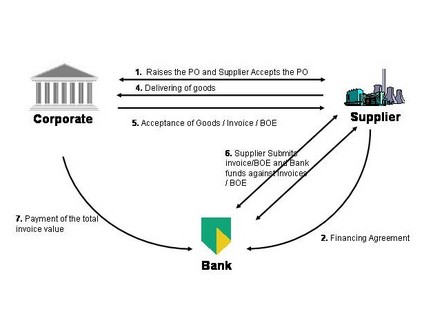
But what was particularly interesting was the amount of debt held by seven major telecommunications companies. In August 2000, Lehman Brothers analyst Ravi Suria wrote a report titled “The Other Side of Leverage,” which pointed to the weaknesses of vendor financing. Vendor financing was precisely what Verizon specialized in. It was a practice that permitted customers to buy their own equipment through unseen financial burdens managed by the company. Suria pointed out that the telecom companies had increased their share of the convertibles market from 5% in 1998 to 20% in 1999. (A convertible is a type of security that can be converted into another form of security — such as a share in a company.) Verizon had managed to pass off much of its debt through their convertibles, because there was no way to squeeze out significant profit from the networks at the time and there was no way to cover the interest payments on accumulating debt. Over the course of four years, the combined debt and convertible bonds of the seven telecoms that Suria was studying had dwarfed to $275 billion. As the New York Times‘s Gretchen Morgenson observed, this was a significant change from the $160 billion in junk bonds generated between 1983 and 1990.
And yet even Suria seemed convinced that there were promising possibilities in the telecom industry. Perhaps Verizon’s faith emerged from the possibilities of keeping customers on-board for life. After all, if you could wipe out the competition, eventually the customer would have no other choice but the Verizon network. And if you could lock a Verizon Wireless customer into a two-year contract, you could then tell your investors that convertibles were merely a “temporary” high-yield debt taken on while waiting for the almighty profits. Perhaps vendor financing represented a new method for Verizon to utilize Ricardo’s comparative advantage theory.
 The equipment vendors buying into this infrastructure had to be somewhat concerned about this high-stakes gamble, but the possibilities of profit seemed to negate financial pragmatism. In Lisa Endlich’s Optical Illusions, Endlich reports that, in 1996, Lucent’s Controller was initially skeptical about expanding on such a significant lending risk. Jim Lusk, the Controller at the time, was an old-fashioned finance type who needed to see how the money was going to pay out and who believed that Lucent should stick to selling equipment rather than lending money, even he turned around for a contract that secured 60% of Sprint PCS’s contract. The cost? $1.8 billion, with payment of principal deferred for four years. Small wonder then when, four years later, Lucent was in bad shape, with the CEO replaced and investors demanding an overhaul. But then, by the end of 2000, the nine largest telecom equipment suppliers had a combined $25.6 billion in vendor financing loans to customers.
The equipment vendors buying into this infrastructure had to be somewhat concerned about this high-stakes gamble, but the possibilities of profit seemed to negate financial pragmatism. In Lisa Endlich’s Optical Illusions, Endlich reports that, in 1996, Lucent’s Controller was initially skeptical about expanding on such a significant lending risk. Jim Lusk, the Controller at the time, was an old-fashioned finance type who needed to see how the money was going to pay out and who believed that Lucent should stick to selling equipment rather than lending money, even he turned around for a contract that secured 60% of Sprint PCS’s contract. The cost? $1.8 billion, with payment of principal deferred for four years. Small wonder then when, four years later, Lucent was in bad shape, with the CEO replaced and investors demanding an overhaul. But then, by the end of 2000, the nine largest telecom equipment suppliers had a combined $25.6 billion in vendor financing loans to customers.
While such measures of financing may seem extraordinary from the perspective of 2009’s deep recession, keep in mind that such actions came shortly after the unprecedented economic boom of the 1990s. But, as we shall later see, Verizon’s investments in other properties were predicated on these companies, in turn, subsisting through additional vendor financing strategies. (By August 2001, Verizon was forced to write off half of its $5.9 billion investment portfolio.)
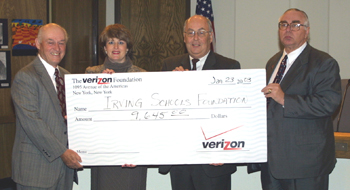 Verizon also established the Verizon Foundation, with the intent to distribute 4,000 grants of $70 million, through an all-online process. This, of course, replicated the funds and the efforts of the Bell Atlantic Foundation. (Not counting for inflation, this figure would remain more or less consistent throughout the years. In 2008, the Verizon Foundation awarded $68 million in grants, roughly 6.4% of its profits from Q1 2008. The Verizon Foundation’s financial statements can be examined here.)
Verizon also established the Verizon Foundation, with the intent to distribute 4,000 grants of $70 million, through an all-online process. This, of course, replicated the funds and the efforts of the Bell Atlantic Foundation. (Not counting for inflation, this figure would remain more or less consistent throughout the years. In 2008, the Verizon Foundation awarded $68 million in grants, roughly 6.4% of its profits from Q1 2008. The Verizon Foundation’s financial statements can be examined here.)
There were also advertising costs. The tab at Draft Worldwide and Zenith Media was $500 million.
The now ubiquitous practice of SMS text messaging was, near the end of 2000, not widely practiced in the United States. This was a bucolic and more innocent time in which people ate dinner with each other and actually had to wait several hours before telling other friends who they were hanging out with. You might say that before 9/11 “changed everything,” SMS “changed everything.”
While businessmen in Japan and Europe texted each other during meetings, it was not until the fourth quarter of 2000 that telecom communities began rolling out two-way SMS service, and cell phone customers could send text messages to each other of no more than 160 characters. The problem, in the United States, involved conflicting and competing standards.
It is necessary to begin at the beginning and briefly (but, by no means, sufficiently) explain these developments. In the early 1980s, emerging cellular telephone systems were creating numerous incompatibilities and frustrations. Enter a group of fussy European telecommunications administrators determined to solve the problem with a compatible system called Global System for Mobile, or GSM. At the risk of skipping over some vital SMS/GSM history and leaving out a good deal of important and interesting figures, let’s just say that they sorted everything out. (I hope to expand this section in the future.)
On December 3, 1992, in the United Kingdom, the first SMS message was sent by engineer Neil Papworth through the Vodafone network (before it was merged into Verizon Wireless). It read MERRY CHRISTMAS. But it would take seven years before the phrase, “Text me,” would enter into the lingua franca.
It took some time. But upon establishing a cost of about 10 cents per message, text messaging became popular in Europe, particularly in Scandinavia, where many of the GSM originators resided. In October 2000, 157 million European wireless customers were SMS-ready. 9 billion SMS messages were sent every month. The price point created a premium that seemed affordable to teenagers and doctors alike, but this was a lucrative markup that remains a source of controversy today. (Indeed, in October 2008, Verizon Wireless had plans to tack on an additional 3 cents per text message.)
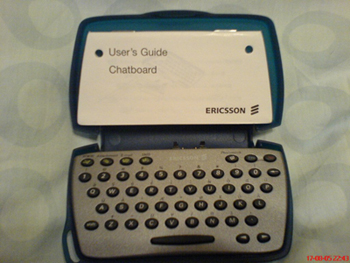 The SMS standard used in Europe was GSM, but the US used three separate standards: TDMA (Time Division Multiple Access), CDMA (Code Division Multiple Access), and a GSM variation that, much like the American NTSC television standard abandoned in 2009, was incompatible with numerous global territories. A Verizon Wireless customer in 2000 could not send a text message to a AT&T Wireless customer. And this lack of global SMS compatibility, together with the then-awkward requirement of typing an email address before sending a text, didn’t exactly win customers over.
The SMS standard used in Europe was GSM, but the US used three separate standards: TDMA (Time Division Multiple Access), CDMA (Code Division Multiple Access), and a GSM variation that, much like the American NTSC television standard abandoned in 2009, was incompatible with numerous global territories. A Verizon Wireless customer in 2000 could not send a text message to a AT&T Wireless customer. And this lack of global SMS compatibility, together with the then-awkward requirement of typing an email address before sending a text, didn’t exactly win customers over.
AT&T Wireless got many of its customers hooked on text messages by offering SMS for free through February 2001. (AT&T would initially charge $4.99 for 500 messages a month, a considerable bargain compared to Verizon’s text message rates today.)
One unexamined consideration is whether Verizon, which owned and maintained all the pay phones in the New York subway stations, deliberately let these pay phones fall into disrepair. After all, why not move these disgruntled pay phone customers onto cell phone plans? And why not work with the city to establish a cell phone network within the cavernous subway system? Verizon, as it turns out, was better at repairing pay phones in 2000 than the year before under Bell Atlantic. According to the Straphangers Campaign, 18% of subway station pay phones were broken in October and November of 2000 (compared to 25% in August 1999). Whether the drop came from reduced crime or reduced pay phone use, it is difficult to say. But as Farouk Abdallah of the Straphangers pointed out at the time, Verizon’s contract with the MTA called for 95% of the pay phones to be “fully operative and in service at all times.”
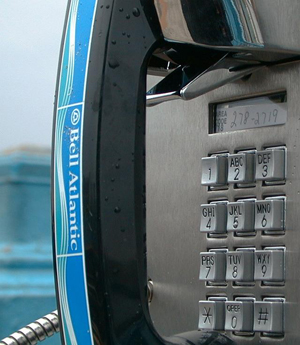 Pay phones, however, were on the wane. When the City of New York announced that it would construct 2,262 new public pay phones, a number of Upper East Side residents, who presumably possessed the expendable income needed to pay for a cell phone, complained about the 1,000 pay phones appearing in their neighborhood. Never mind that only half of New York residents had cell phones and 20% of residents in poorer neighborhoods didn’t even have regular phones. The pay phone kiosks would be an eyesore. Verizon, interestingly enough, did not apply to operate the new phones.
Pay phones, however, were on the wane. When the City of New York announced that it would construct 2,262 new public pay phones, a number of Upper East Side residents, who presumably possessed the expendable income needed to pay for a cell phone, complained about the 1,000 pay phones appearing in their neighborhood. Never mind that only half of New York residents had cell phones and 20% of residents in poorer neighborhoods didn’t even have regular phones. The pay phone kiosks would be an eyesore. Verizon, interestingly enough, did not apply to operate the new phones.
Three months before the United States would enter a nine-month recession in 2001, shares in Verizon fell $3.94 on December 20, 2000 to $51.88. Despite the 3,500 DSL lines that Verizon claimed it was installing daily, Verizon seemed more interested in promulgating financial projections for 2001 and 2002 rather than coughing up any data about the present. (Lucent, that seemingly dependable equipment vendor who had bet the farm on vendor financing, announced two days later that it would lose more than it had anticipated and that layoffs were forthcoming.)
And the customers wanted more. They wanted nationwide coverage that wasn’t lossy. Analysts suggested that the infrastructure wasn’t there and couldn’t support the dramatic uptick in customers. Could the customer understand that a cell phone was entirely different from a landline? Did they know the difference between an analog and a digital phone? Did they understand that using all those minutes in the package was a trap to get customers reliant upon cell phones? Did they consider that maybe it was the telecom companies who held all the cards in the relationship? Or perhaps increasing and often unreasonable demands were a way for the customer to feel that he had some power or confidence?

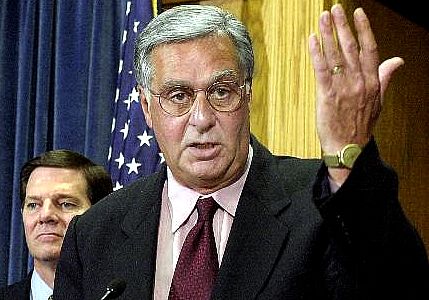
 Customers service reps, bearing the brunt of too much stress, were given five 30-minute breaks each week. The new contract also made it difficult for workers to be shuttled around from one national region to another, which caused
Customers service reps, bearing the brunt of too much stress, were given five 30-minute breaks each week. The new contract also made it difficult for workers to be shuttled around from one national region to another, which caused 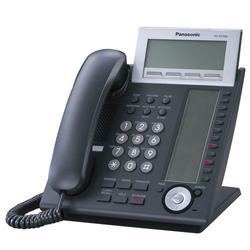 For eager customers, however, the more important question was whether or not Verizon could roll out its DSL services faster. Verizon, like Flashcom, was sometimes taking
For eager customers, however, the more important question was whether or not Verizon could roll out its DSL services faster. Verizon, like Flashcom, was sometimes taking  It’s worth pointing out that Verizon did listen to its customer base from time to time. The company had pulled its ads
It’s worth pointing out that Verizon did listen to its customer base from time to time. The company had pulled its ads  Verizon took great care in presenting itself as a corporation that cared about the public. In October, Verizon spokesman Kevin Moore
Verizon took great care in presenting itself as a corporation that cared about the public. In October, Verizon spokesman Kevin Moore